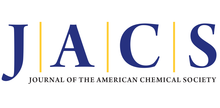
Published on Journal of The American Chemical Society (23 January 2023)
Author(s): Wei Guo, Danyang Ji, Andrew B. Kinghorn, Feipeng Chen, Yi Pan, Xiufeng Li, Qingchuan Li, Wilhelm T. S. Huck, Chun Kit Kwok*, and Ho Cheung Shum*
Abstract
RNA encodes sequence- and structure-dependent interactions to modulate the assembly and properties of biomolecular condensates. RNA G-quadruplexes (rG4s) formed by guanine-rich sequences can trigger the formation of liquid- or solid-like condensates that are involved in many aberrant phase transitions. However, exactly how rG4 motifs modulate different phase transitions and impart distinct material properties to condensates is unclear. Here, using RNA oligonucleotides and cationic peptides as model systems, we show that RNA-peptide condensates exhibit tunability in material properties over a wide spectrum via interactions arising from rG4 folding/unfolding kinetics. rG4-containing oligonucleotides formed strong pairwise attraction with peptides and tended to form solid-like condensates, while their less-structured non-G4 mutants formed liquid-like droplets. We find that the coupling between rG4 dissociation and RNA–peptide complex coacervation triggers solid-to-liquid transition of condensates prior to the complete unfolding of rG4s. This coupling points to a mechanism that material states of rG4-modulated condensates can be finely tuned from solid-like to liquid-like by the addition of less-structured RNA oligonucleotides, which have weak but dominant binding with peptides. We further show that the tunable material states of condensates can enhance RNA aptamer compartmentalization and RNA cleavage reactions. Our results suggest that condensates with complex properties can emerge from subtle changes in RNA oligonucleotides, contributing ways to treat dysfunctional condensates in diseases and insights into prebiotic compartmentalization.
